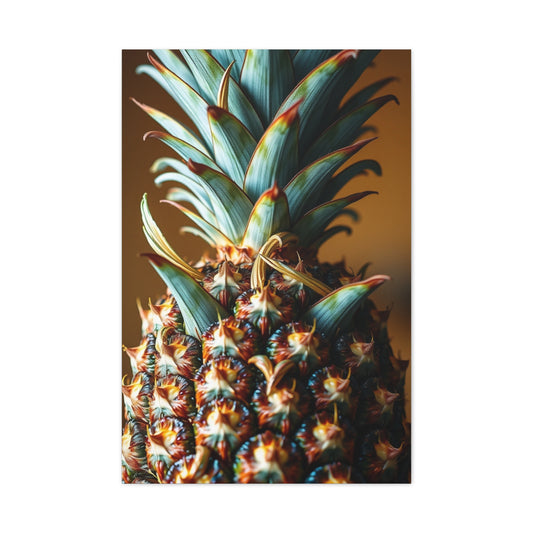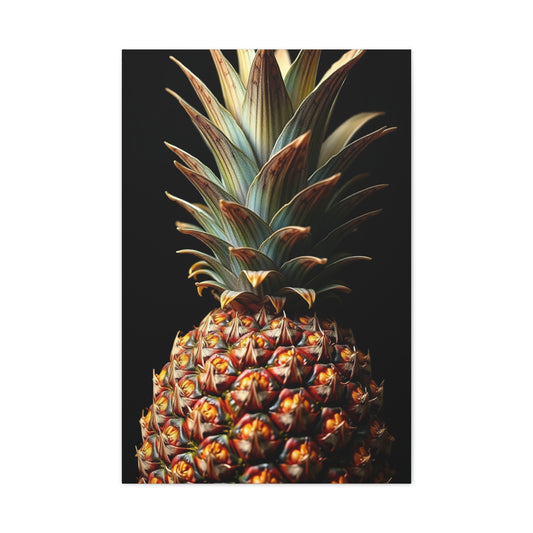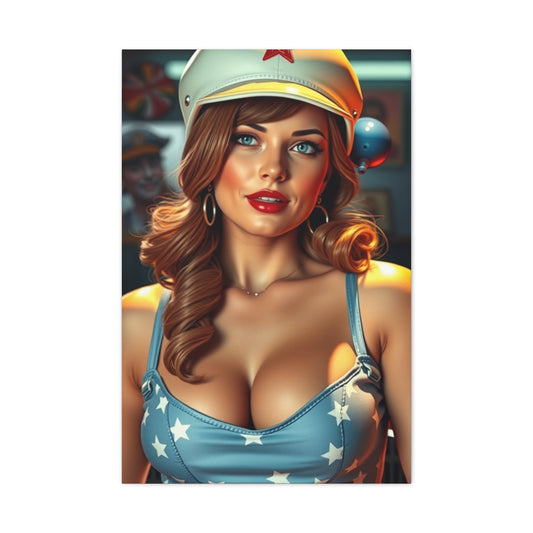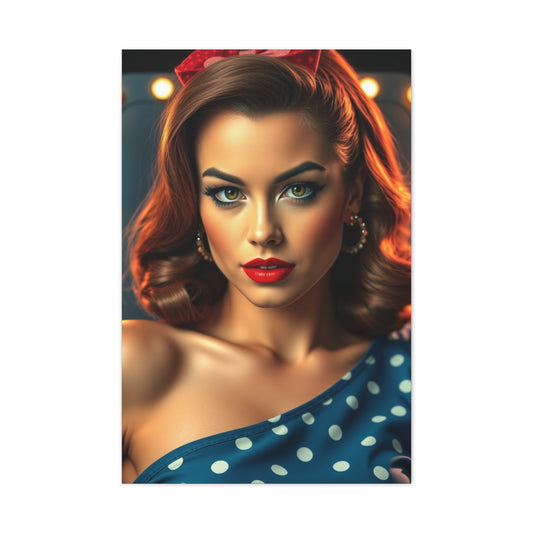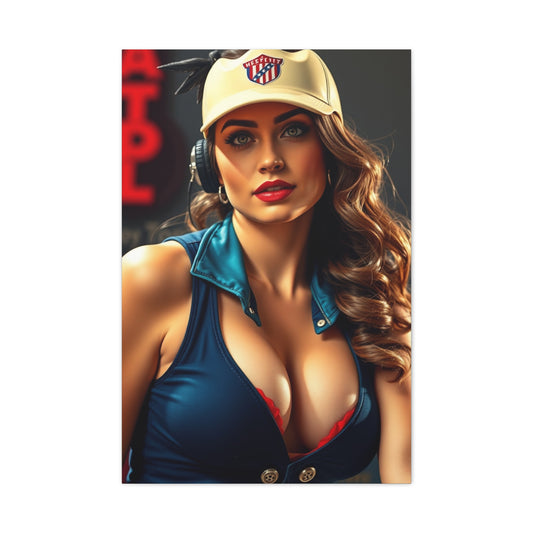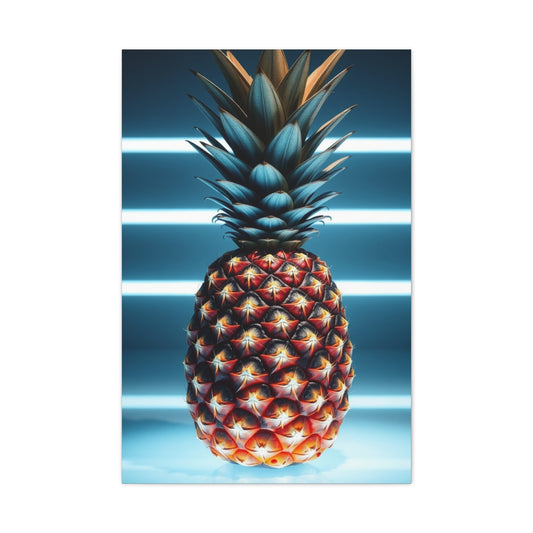Your Instagram profile picture is more than just a placeholder—it’s the visual emblem of your identity in the vast social media landscape. It’s the first cue your audience encounters, an introduction without words. Whether you're a burgeoning brand, a seasoned content creator, or a passionate individual expressing your story, getting the size of your Instagram profile image just right is vital for clarity, consistency, and aesthetic magnetism.
In this in-depth guide, we’ll explore the most current image specifications, uncover dimension recommendations for all Instagram formats, and share nuanced insights to ensure your visual content performs brilliantly across devices in 2024.
Optimal Sizing for Your Instagram Profile Image
In the ever-evolving realm of social media, where aesthetic cohesion and visual identity reign supreme, your Instagram profile image holds disproportionate weight despite its modest dimensions. Often underestimated, this compact circular image serves as your digital insignia—a visual signature that not only introduces your persona but anchors your identity across the platform.
Default Rendering Dimensions and Their Limitations
On the mobile interface, Instagram renders your display picture at 110 by 110 pixels—a diminutive frame that suffices for small screens but falls short when stretched onto larger resolutions. On tablets and desktop monitors, where detail and clarity become more apparent, such a low pixel count can cause your image to appear soft, blurred, or jagged, eroding the professional polish of your online presence.
Recommended Upload Size for Best Results
To ensure that your profile picture retains fidelity across all screen types, a proactive approach is necessary. Uploading your image at 180 by 180 pixels is currently the most effective method for preserving quality while remaining within Instagram’s processing limits. This resolution provides a harmonious balance between sharpness and flexibility, minimizing loss during compression while offering a visually refined impression whether your audience views your profile on a handheld device or a widescreen display.
Navigating the Circular Crop
But achieving optimal resolution is only part of the equation. The platform applies a circular mask to every profile image, trimming corners and forcing all visual elements to reside within an implied sphere. This automated crop is non-negotiable and can inadvertently clip off edges of square or intricate images. Therefore, any composition intended for this space must be designed with centricity in mind.
Faces, logos, or brand icons should be meticulously centered. Ornate borders, detailed backgrounds, or visual elements too close to the perimeter risk being shaved away. The most effective profile images for Instagram are those that remain legible and expressive even in reduced, rounded forms. Simplicity, symmetry, and spatial balance are paramount.
Choosing the Right Visual Elements
For personal accounts, a well-lit portrait with an uncluttered background often achieves the best results. Whether it’s a candid selfie or a professional headshot, the focus should always be your face. Expression and eye contact help convey approachability and authenticity, two attributes that are instantly perceptible—even in miniature format.
Business profiles, on the other hand, may benefit from logo usage or branded imagery. If your brand has visual elements that are normally too intricate for tight framing, consider simplifying your logo into a monogram or iconized version that scales better for digital use. Remember, the Instagram profile picture is often the first point of visual contact between your brand and potential followers—coherence and legibility are key.
Consistency Across Platforms
Consistency also plays a vital role. If your Instagram presence is one arm of a broader digital ecosystem that includes platforms like LinkedIn, YouTube, TikTok, or personal websites, keeping your profile image uniform across all channels strengthens brand continuity. When a user recognizes the same visual cue across multiple environments, it instills familiarity, professionalism, and trust.
Image Quality and Format Recommendations
It’s also worth noting that Instagram’s compression algorithm does not discriminate gently. Regardless of upload quality, your image will undergo automatic reformatting to suit performance metrics and server efficiencies. The best way to prepare for this transformation is by beginning with a high-quality, properly scaled image. Save your image in PNG format for cleaner edges and less degradation during upload. JPEGs can work as well, but overly compressed or low-resolution versions may result in visible pixel artifacts once rendered on the platform.
Viewing Full-Resolution Profile Photos
For those curious to see profile images in their original proportions—particularly of others—external tools like instadp and izuum offer high-resolution previews that restore the full square crop. These utilities not only display profile pictures without Instagram’s circular frame but also present them at maximum available quality, offering a glimpse into the raw file that was uploaded.
While these apps can satisfy visual curiosity or support design benchmarking, creators must still optimize their own uploads from the start. No tool can compensate for a poorly composed or improperly sized image. Planning with precision from the beginning yields far superior results.
The Role of the Profile Picture in User Interaction
Your profile picture also follows you throughout Instagram. It appears beside every comment, message, and post you interact with. This repetition cements your identity in the minds of your audience. Thus, any flaws or inconsistencies in the image become glaring over time. If you rely on your Instagram for business, networking, or personal branding, there’s no excuse for anything less than excellence in this visual token.
The Psychological Impact of Strong Profile Imagery
Moreover, there is a psychological component to consider. Numerous studies on digital communication have revealed that visual stimuli, particularly human faces, elicit faster and more engaged responses than text alone. Your profile picture is not just a stamp of identity—it is a powerful cognitive shortcut, one that fosters trust and connection in under a second. When appropriately sized, carefully chosen, and intentionally designed, this single image becomes an ambassador for everything you represent online.
Small Size, Monumental Impact
As Instagram continues to emphasize video content, reels, and algorithmic discovery, your profile photo remains the one visual constant—static yet symbolic, succinct yet salient. It’s what appears in search results, in direct messages, and on suggested accounts. As such, it must function well not just in its original frame but as a persistent beacon of your digital brand.
To summarize, sizing your Instagram profile picture at 180 by 180 pixels is a smart, simple, and highly effective strategy for ensuring professional presentation across all devices. Favor centralized layouts with minimal clutter, export in high-resolution formats, and maintain visual consistency across your online channels. With these strategies, your profile image will transcend its small size and become a pillar of your Instagram identity—powerful, polished, and unmistakably yours.
Creating a Distinct Visual Identity Through Your Profile Photo
Your Instagram profile picture is more than a decorative thumbnail—it's a deliberate expression of who you are and what you represent. In an environment saturated with imagery, this single circular image acts as your digital handshake. It greets visitors before a caption is read, before a reel is played, and before a follow is considered. Its impact is both immediate and enduring, setting the tone for your entire Instagram presence.
A compelling profile image is your emblematic insignia—an icon that should evoke recognition, trust, and visual coherence. Whether you are curating a business brand, promoting your creative enterprise, or simply presenting your authentic self, selecting the right image is a thoughtful exercise in self-representation.
The Purpose Behind Your Profile Image
The goal of a profile photo is twofold: recognizability and resonance. First, it must be easily identifiable, especially in crowded spaces like the comment section or Instagram Stories. Second, it must resonate with your target audience—inviting, intriguing, or establishing authority depending on your account's intent.
For brands and businesses, the profile image should function as a microcosm of your identity. This is your digital storefront, your seal of professionalism, and the beacon by which followers recall your name. If your logo is clean and adaptable, it may be the most efficient choice. Simplified versions of logos, such as initials or iconography, tend to perform better in circular frames and at small scales.
Photographers, designers, artists, and creators often benefit from integrating a touch of humanity into their profile photo. A portrait taken mid-creation, such as a photographer behind the lens or a chef plating a dish, communicates both your craft and your personality. These candid-style images help forge a more immediate emotional connection with your audience.
Selecting a Profile Image for Personal Accounts
If your Instagram is personal or lifestyle-focused, your profile photo should reflect your essence—relatable, clear, and visually cohesive with the rest of your feed. While the temptation to use abstract or stylized imagery is understandable, remember that your face is your most recognizable asset.
A headshot with soft natural lighting and a neutral or blurred background works best. It allows your facial features to remain sharp even when the image is compressed to thumbnail size. Avoid cluttered environments, complex patterns, or dark shadows that could diminish visibility. Your expression should feel welcoming, confident, or true to your personality. Direct eye contact adds a touch of magnetism and draws users in intuitively.
It’s also wise to avoid using full-body shots, as Instagram’s circular crop and size constraints make it nearly impossible for these to retain clarity. Your profile picture should offer a close-up or mid-shot framing to ensure that facial recognition isn't lost.
Consistency Is the Keystone of Recognition
One of the most strategic decisions you can make for your profile identity is to maintain visual consistency across all digital platforms. Your Instagram avatar should ideally match your image on LinkedIn, YouTube, TikTok, Pinterest, and even your email signature or website bio. This consistency cultivates familiarity and fosters trust among your audience, especially when you're engaging in a multi-platform strategy.
Consider your profile photo the cornerstone of your digital ecosystem. If a potential follower encounters your content on multiple channels, this consistency confirms they’ve found the same person or brand. It eliminates doubt and deepens the perceived reliability of your presence. For businesses, brand recall becomes stronger. For individuals, trustworthiness becomes more tangible.
Aligning Your Profile Photo With Your Brand Tone
Your Instagram profile picture should also align visually and thematically with your overall brand aesthetic. If your feed is minimalist, opt for a clean, muted portrait or a monochrome version of your logo. If your account thrives on vibrant colors and kinetic energy, consider a colorful, well-lit image that reflects this mood.
Cohesion doesn't require redundancy but should maintain continuity. Think of your avatar as a teaser or thumbnail for the content people will find on your grid. It sets expectations while also leaving room for curiosity. This subtle harmony between your profile image and your overall visual language creates an immersive brand experience.
For creative professionals, this might mean wearing your work—an artist with paint-streaked hands, a dancer mid-movement, or a writer with a notebook. For lifestyle influencers, this might mean showcasing a signature fashion piece or setting that speaks to your ethos.
Tips to Enhance Visual Legibility at Small Sizes
Since your Instagram profile image appears in various formats—from large profile displays to minuscule thumbnails in notifications and comments—it’s critical to ensure the photo retains clarity at every size.
To enhance legibility, follow these tips:
-
Use a centered composition to prevent key elements from being cropped.
-
Maintain contrast between your face or logo and the background.
-
Choose image resolutions no smaller than 180 x 180 pixels for optimal clarity.
-
Export in a high-quality format such as PNG for crisper edges.
-
Avoid text in the profile image unless it’s absolutely essential and designed for legibility at small sizes.
Instagram automatically crops the image into a circle, so previewing your photo with a circular mask before uploading helps avoid unintended clipping. A visually balanced composition ensures nothing vital falls into the trim zone.
When and How to Refresh Your Profile Image
While consistency is key, there may come a time when updating your profile image becomes necessary. Rebranding, new milestones, or a shift in aesthetic direction are valid reasons for change. However, avoid frequent alterations that can confuse your audience or dilute your brand recognition.
Before making a switch, ensure that the new image matches the tone, clarity, and coherence of the existing one. Try to retain some visual anchors—perhaps similar framing, color palette, or lighting—to ease the transition for your followers.
Additionally, update your profile image across all platforms simultaneously. This synchronicity reaffirms your identity and presents a unified digital front.
Understanding the Instagram Grid and Thumbnail Compression
Beneath your profile photo and bio lies the very backbone of your Instagram presence—the grid. This symmetrical, three-column layout functions not only as a catalog of your past content but as a cohesive visual narrative that shapes how viewers interpret your brand or personality. It's a mosaic of moments, aesthetics, and impressions that, when curated with intentionality, transforms into an expressive canvas of your digital identity.
Whether you’re a visual storyteller, entrepreneur, artist, or casual user, understanding how Instagram resizes, crops, and compresses the images in your grid is essential to maintaining clarity and coherence. The Instagram grid might appear minimalistic at a glance, but behind its clean lines lies a sophisticated framework governed by compression algorithms, thumbnail dimensions, and adaptive display mechanics.
Thumbnail Dimensions and the Role of Compression
Each visual element within the Instagram grid is presented as a thumbnail. While original images might be captured in high resolution with vibrant detail, Instagram compresses these images significantly for grid presentation. When condensed into a 3xN matrix of squares, your once-crisp photographs are reduced to a mere 40 by 40 pixels in grid view.
This compression is dramatic, even smaller than your profile picture, and it can strip away nuance from intricate or highly detailed visuals. Text becomes illegible, fine linework blurs, and carefully edited color transitions may flatten into muddy hues. This reduction is not a flaw but a necessity—Instagram optimizes image sizes to ensure faster loading times, reduced bandwidth consumption, and seamless scrolling across devices.
That said, this extreme downscaling demands thoughtful content preparation. For creators who understand how Instagram’s grid behaves, this constraint becomes a creative challenge rather than a hindrance.
The Importance of Simplicity and Clarity
Because the thumbnails are viewed at such a small scale, complex visuals can lose their impact. Instead of relying on dense, intricate compositions, opt for images that feature strong contrasts, centralized subjects, or bold colors. These elements remain discernible even after heavy compression.
Images with minimalist composition—such as portraits with solid backgrounds, single-object still lifes, or bold graphic shapes—tend to fare better in the Instagram grid than collages, textures, or cluttered visuals. Simplicity is not a limitation; it's a design strategy. Clean, focused thumbnails not only preserve their clarity in miniature but also invite the viewer to tap and explore further.
Another key consideration is framing. Since the grid thumbnails are square, any rectangular or irregularly shaped image will be cropped to fit this format. This means important elements near the edges of your photo might be truncated unless you prepare the composition with adequate margin space.
Expanded View and Full Resolution Details
While thumbnails are drastically reduced in size, Instagram allows users to expand each post. When someone taps on a thumbnail, the image or video opens in a full-screen viewer. In this expanded state, static images can display at resolutions up to 612 by 612 pixels for square photos, offering much greater clarity and visual presence.
However, this doesn’t mean users should rely solely on the expanded view. The grid serves as the introduction—your visual storefront. If the thumbnail doesn’t entice viewers to tap, the full-resolution details may never be seen. This makes it vital to strike a balance between grid appeal and expanded impact.
The expanded view is where your creative efforts are fully rewarded. Here, your image’s true resolution, vibrancy, and subtleties become apparent. This is where textures, shadows, and fine gradients breathe life into the image. It's also where your captions, tags, and interactive elements reside. But to get the viewer to this point, your grid thumbnails must function as compelling invitations.
Accommodating Different Image Orientations
Instagram now allows for greater flexibility in image formats, supporting portrait and landscape orientations in addition to square. However, even when uploading a vertically framed image, such as 1,080 by 1,350 pixels, or a landscape one like 1,080 by 608 pixels, the thumbnail preview that appears on your grid will still be forced into a square.
This uniformity in the grid maintains a neat, cohesive aesthetic but requires creators to design their images with cropping in mind. Critical elements must be situated within the central square of your image to avoid being cut off in the thumbnail version. Think of the square as your “safe zone” and build your composition around it.
Once tapped, the original orientation is revealed in full, which is ideal for presenting fashion editorials, product photography, food images, or travel shots that demand a vertical or horizontal narrative. This dual-format system allows you to optimize your images both for grid aesthetics and immersive storytelling.
Visual Cohesion Across the Grid
Beyond individual thumbnails, the grid functions as a whole. This is where branding, color schemes, and thematic consistency come into play. Visual rhythm—achieved through alternating tones, subject types, or spacing—enhances the viewer’s experience. Whether you adopt a checkerboard style, a diagonal pattern, or a uniform color palette, a deliberate visual structure can elevate your grid from a collection of posts to a professional showcase.
When users land on your profile, they don’t see your posts one by one—they see the grid. This first impression can determine whether they scroll, follow, or move on. In this sense, the grid becomes your visual résumé. It signals your style, consistency, and attention to detail. Businesses and creators often spend as much time curating the arrangement of their grid as they do crafting each individual image.
Planning Content with Grid Behavior in Mind
To truly harness the power of the Instagram grid, consider planning your posts in advance using layout preview tools. These applications simulate your grid with future uploads, allowing you to sequence images in a way that tells a story or maintains balance.
Planning ahead also helps you diversify your content—mixing lifestyle shots with quotes, videos with stills, or close-ups with wide shots—while still ensuring that no visual element appears redundant or out of place.
In doing so, you create a digital environment that feels curated, intentional, and cohesive. This approach not only improves user experience but also encourages deeper engagement, as visitors are more likely to explore content from a profile that feels polished and thoughtfully assembled.
The Evolution of Aspect Ratios on Instagram
Instagram, when it debuted in 2010, was revered for its distinct commitment to square-format images. This design choice created a consistent visual language that mimicked vintage Polaroid photographs and offered a uniform scrolling experience. For years, square dimensions dominated the platform, simplifying composition and reinforcing a minimalist design ethos. However, this fixed ratio, while aesthetically consistent, gradually began to feel restrictive for many creators who craved more compositional freedom.
As smartphones advanced and user creativity flourished, the limitations of the 1:1 format became increasingly evident. Professional photographers, digital artists, marketers, and lifestyle content creators sought a more expansive canvas to tell their stories. Responding to this surge in demand, Instagram adapted—quietly revolutionizing its upload capabilities to include both portrait and landscape orientations.
This shift in aspect ratios marked a pivotal point in Instagram’s evolution, transforming it from a uniform photo-sharing app into a dynamic storytelling platform.
Understanding the Modern Aspect Ratios
Instagram now supports multiple aspect ratios, allowing content creators to retain the original framing of their images without being forced into a square crop. The two most popular non-square formats are:
-
Portrait (Vertical) Images: These adhere to a 4:5 ratio, which translates to 1,080 pixels by 1,350 pixels. Vertical photos take up more vertical space in the feed, making them visually dominant and more attention-grabbing.
-
Landscape (Horizontal) Images: Best displayed at a 1.91:1 ratio, which is typically 1,080 pixels by 566 pixels. Landscape photos offer a cinematic feel and are ideal for panoramic shots or wide-angle scenes.
These aspect ratios are a vast improvement in terms of creative latitude. Portrait images especially benefit from additional screen space on mobile devices, giving creators an edge in engaging their audience through taller, fuller visuals.
Square Cropping Still Persists in the Grid
Despite these updates, the legacy of the square format still exists—most notably within the Instagram profile grid. Regardless of the orientation used in an upload, all posts appear as square thumbnails in the three-column matrix under your profile. This ensures grid uniformity but introduces compositional challenges for non-square content.
To mitigate unwanted cropping, it’s essential to compose your images with a “safe zone” in mind. Positioning the subject centrally within the frame ensures that it remains visible even when the image is compressed into a square preview. This foresight preserves your image’s impact both in the feed and the profile view.
Creative Possibilities Unlocked by Aspect Ratio Flexibility
The introduction of vertical and horizontal aspect ratios has amplified the storytelling potential on Instagram. Artists are now able to share vertical sketches or paintings in full, without the need for awkward framing. Photographers can present landscape shots that span entire horizons, capturing the grandeur of natural or urban environments.
Fashion bloggers and lifestyle influencers have also reaped the benefits. Portrait orientation allows for full-length outfit shots, architectural features, and detailed vertical compositions that convey elegance and depth. Food stylists and interior designers, too, benefit from portrait images that reveal layers, textures, and vertical lines that once were truncated in square format.
For commercial users, this means enhanced product photography—more immersive images of clothing, accessories, home goods, and services that engage the viewer with scale and detail. The ability to control how your work is seen means less compromise on artistry and a more faithful representation of your visual intent.
How Aspect Ratios Impact Engagement
The size and orientation of a post directly influence user engagement. Vertical images occupy more screen real estate, especially on mobile devices, which encourages users to pause, engage, and scroll slower. In contrast, horizontal images tend to blend into the feed more subtly and may require stronger compositional techniques to capture attention.
From an algorithmic standpoint, longer viewing durations and engagement rates contribute positively to your visibility on the platform. Therefore, portrait formats, by sheer vertical dominance, often generate better engagement when combined with compelling visuals and captions.
However, this does not negate the value of landscape photography. When used thoughtfully, wide-format images can evoke cinematic atmosphere, tranquility, or dynamism. They work exceptionally well for travel content, real estate showcases, and storytelling sequences.
Planning Content Across Multiple Formats
The ability to post using varying aspect ratios requires a nuanced approach to planning your content. Rather than defaulting to one format, consider the story you're trying to tell. Is it something that benefits from height and detail? Then portrait is ideal. Is it a sprawling scene or product line? Opt for landscape.
It's also helpful to preview how different formats will appear within your grid, as disproportionate compositions can disrupt visual rhythm. Use design tools that simulate your grid before posting, ensuring each image enhances the overall layout without appearing abrupt or disjointed.
Strategic use of white space or border templates can also help unify mixed aspect ratios on your grid, especially when alternating between portrait and landscape posts.
Challenges and Considerations for Non-Square Uploads
While Instagram’s expanded aspect ratio support offers many advantages, it also introduces a few technical and aesthetic challenges. Uploads must still adhere to maximum file sizes and dimensions to avoid compression artifacts. Oversized images can be reduced in quality automatically, leading to pixelation or color banding.
Additionally, some third-party scheduling tools may not support custom aspect ratios as seamlessly, which means previewing and editing content might need to happen within the native Instagram app for optimal accuracy.
It’s also important to remember that while the feed allows expanded orientation, Stories and Reels still follow their own strict vertical formats. Understanding how to adapt your imagery across these different posting mediums is crucial for maintaining a coherent visual identity.
The Future of Format Fluidity
Instagram’s decision to embrace multiple aspect ratios mirrors the broader shift in digital design toward adaptability and user-centric customization. As social media continues to mature, platforms are increasingly moving away from rigid templates and toward dynamic frameworks that allow users to express themselves more freely.
We can expect this fluidity to deepen, with future updates likely to include even more nuanced layout control, immersive carousel designs, and integration with mixed media formats.
Recommended Image and Video Upload Sizes for Peak Quality
In the visual-first ecosystem of Instagram, every pixel carries weight. Whether you're an artist sharing your latest illustration, a business showcasing a product, or a traveler capturing a distant landscape, how you prepare your media before uploading directly affects how your audience perceives your content. Instagram’s internal compression algorithms are unforgiving, and while they serve an important role in conserving bandwidth and improving load times, they often compromise image and video quality in the process.
The solution lies in proactive optimization. Uploading high-resolution, well-proportioned media ensures that Instagram’s automatic processing minimizes degradation. A clear, vibrant post that maintains fidelity through compression not only captivates viewers but also elevates your aesthetic consistency across the platform.
Why Upload Size and Resolution Matter
Instagram does not display your media at the original size. Every image and video is resized and compressed behind the scenes to match the platform’s display parameters and performance standards. The more room Instagram has to compress, the better the resulting quality. This means that starting with a higher-resolution file gives the algorithm more data to work with, resulting in less distortion, fewer compression artifacts, and a cleaner presentation overall.
Uploading files that are too small or already compressed leaves little flexibility for Instagram’s systems. This often results in washed-out colors, blurring, or even banding in areas of gradient or texture—outcomes that can diminish the professionalism and appeal of your post.
Recommended Resolution for Square Images
The classic square format remains one of the most common styles for Instagram uploads, particularly for users aiming to maintain a neat and balanced profile grid. While Instagram technically accepts any image above 320 by 320 pixels, the recommended upload size is at least 1,080 by 1,080 pixels.
For creators who want to future-proof their content and ensure the best possible clarity, uploading at 2,048 by 2,048 pixels is a smart move. This resolution provides Instagram with plenty of visual data, which results in more refined compression and crisper final output. At this size, intricate textures and subtle color gradients remain intact, making your image visually engaging even when viewed on high-resolution screens.
When preparing square images, keep important details away from the extreme edges. While square posts are less prone to cropping issues, leaving a margin ensures that nothing is lost to the frame or compressed blur.
Landscape (Horizontal) Image Recommendations
Landscape-oriented photos are ideal for wide scenes, group compositions, or panoramic settings. The recommended resolution for these images is 1,080 by 608 pixels, offering a balanced aspect ratio of approximately 1.91:1. This horizontal stretch evokes a cinematic feel and performs well when presenting immersive experiences such as travel vistas or event photography.
Though lower resolutions like 600 by 400 pixels may technically suffice, they’re not recommended for users who prioritize image fidelity. Lower-res files compress poorly, often leading to visual artifacts, faded tones, and a general loss of sharpness. Higher resolution landscape uploads help preserve the fine details and tonal depth that give your content visual credibility.
Due to the nature of horizontal framing, it's also important to center your focal elements, particularly if they are narrow or concentrated. The horizontal format leaves more room on either side, so thoughtful composition is vital to maintaining visual balance.
Portrait (Vertical) Image Specifications
Portrait images—those vertically aligned—occupy more screen space in the feed, which can significantly enhance engagement. Instagram supports a maximum vertical resolution of 1,080 by 1,350 pixels for portrait content, which follows a 4:5 aspect ratio.
While the app may display the image at reduced dimensions, such as 600 by 749 pixels, uploading at the highest supported size ensures your media looks refined and detailed when viewed in full. Vertical images command attention on mobile devices due to their tall format, making them ideal for portraits, fashion shots, product photography, or any content that benefits from height.
Because portrait images are more prone to cropping on thumbnails or within the profile grid, it's best to avoid placing essential subjects too close to the top or bottom edges. Use centered framing and avoid narrow margins to preserve visual integrity across views.
Video Upload Guidelines and Resolutions
Instagram's treatment of video content differs from its handling of still images. For feed videos, the platform currently supports resolutions up to 640 by 640 pixels, especially when the video is presented in a square format.
However, square is not the only option. You can upload landscape or portrait videos, provided they adhere to Instagram's maximum aspect ratios. Landscape videos should follow the 1.91:1 aspect ratio, while portrait videos can be up to 4:5.
One of the most overlooked yet crucial elements of Instagram video content is the first frame. Since videos auto-play silently as users scroll through their feed, the opening frame must be compelling, vibrant, and visually dynamic enough to catch attention in an instant. If your video begins with a fade-in or slow introduction, consider inserting a powerful still or dynamic visual cue as the initial frame.
For videos, duration also plays a significant role. Feed posts should be no shorter than 3 seconds and no longer than 60 seconds. Anything beyond this range is better suited for Reels or IGTV, both of which have their own specifications and user expectations.
When exporting video, use codecs and bitrates that align with Instagram's preferences—H.264 format with AAC audio is widely accepted, and a bitrate of at least 5,500 kbps is recommended for optimal clarity.
Export Formats and Best Practices
To preserve your media’s clarity before uploading, always export in high-quality formats. For images, PNG is ideal for sharp lines and graphics, while JPEG works well for photographs—so long as compression is minimized. Always use the sRGB color profile for compatibility with Instagram's rendering engine.
For videos, use an MP4 container with the H.264 codec and AAC audio. Ensure your file size remains below 100 MB for smoother uploads and faster processing.
Naming conventions, metadata, and orientation tags should also be checked before uploading. Occasionally, improper metadata can cause Instagram to display your images rotated incorrectly or crop them in unintended ways.
Designing Instagram Stories with Perfect Dimensions
Stories sit atop your profile, ephemeral and immersive, vanishing after 24 hours unless saved in the Highlights reel. Due to their full-screen nature, proper dimensioning is more essential here than anywhere else on the platform.
For photos shared in stories, a resolution of 1,080 by 1,920 pixels is ideal. This fills the screen completely and avoids stretching or pixelation.
For videos in stories, 750 by 1,334 pixels is the recommended maximum size. Each clip is capped at 10 seconds, though you can post multiple sequential stories to convey a broader narrative.
Ensure important text, logos, or subjects stay within the central area—Instagram’s UI elements like message bars and swipe actions often obscure the top and bottom edges.
Instagram Advertising: Proper Dimensions for Sponsored Success
Instagram advertising blends into user feeds and stories with a level of seamlessness unmatched by many platforms. However, this native style means your visuals must meet precise criteria to remain sharp and impactful.
Square advertisements should be uploaded at 1,080 by 1,080 pixels, though they are typically rendered at 640 by 640 pixels. Ensuring clarity at both resolutions is essential.
Landscape ads function best when uploaded at 1,080 by 566 pixels, compressing to 640 by 400 pixels during delivery. This ratio allows for cinematic visuals but requires thoughtful framing.
It’s also worth noting Instagram’s preference for minimal text in images. When an image is overloaded with typography, the algorithm deprioritizes it. To maximize reach, it’s best to keep text coverage below 20 percent and rely on strong captions and calls-to-action to deliver your message.
Why Image Precision Shapes Perception on Instagram
Instagram is more than a social feed—it’s a visual symphony of curated expressions. With countless profiles vying for attention, the subtle mastery of resolution, proportion, and image placement becomes the defining trait of polished creators and brands.
Using correct image dimensions does more than enhance visual sharpness. It builds trust. It shows intentionality. It communicates that your profile is maintained with care, inviting audiences to explore further rather than scroll away.
From the humble profile circle to story reels that dance across screens, every pixel should serve your message. Attention to these details elevates your narrative from ordinary to exceptional.
Final Reflection: Make Every Pixel Count
In a world where social interaction is driven by visuals, understanding the nuances of Instagram image sizes is no longer optional—it’s imperative. Correct sizing translates into higher engagement, better aesthetic consistency, and an improved user experience.
This guide has equipped you with everything you need to present your Instagram content at its most luminous. Whether you're updating your avatar, refining your grid, launching a campaign, or simply sharing a slice of life, let each upload reflect the quality you wish to convey.
Bookmark this resource for ongoing reference. As Instagram continues to evolve, so should your approach—adaptive, attentive, and visually astute.











